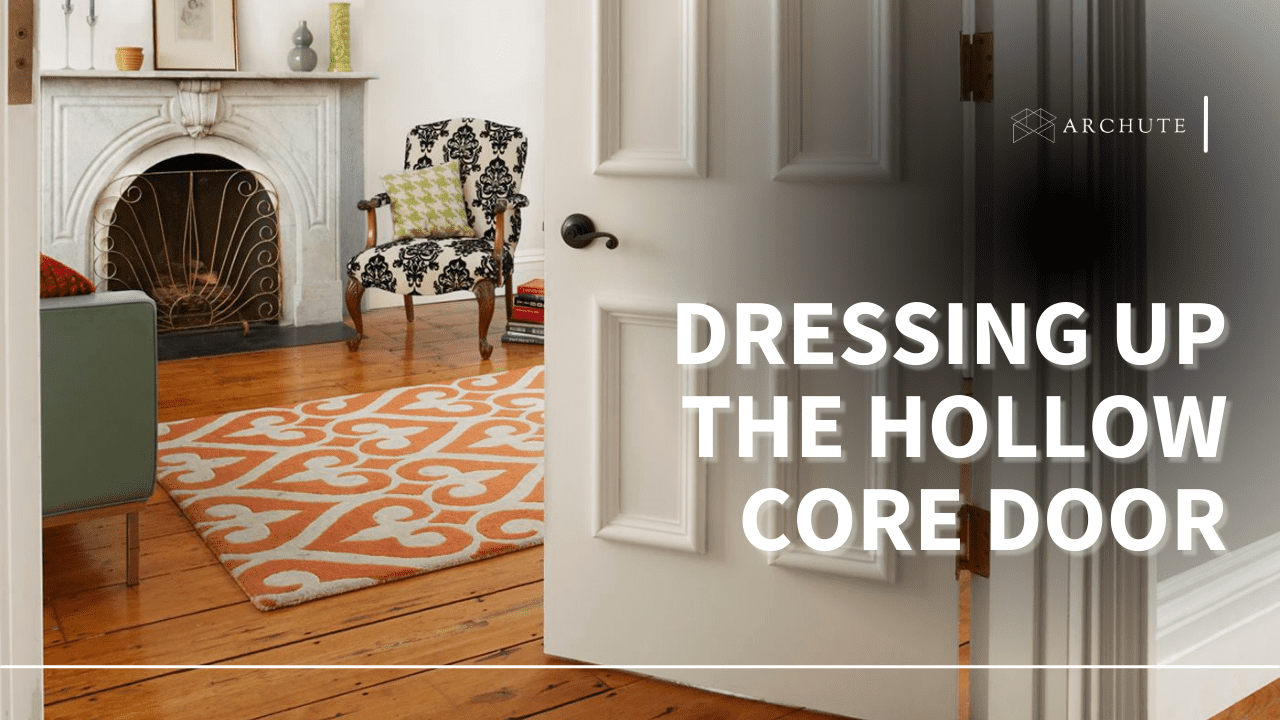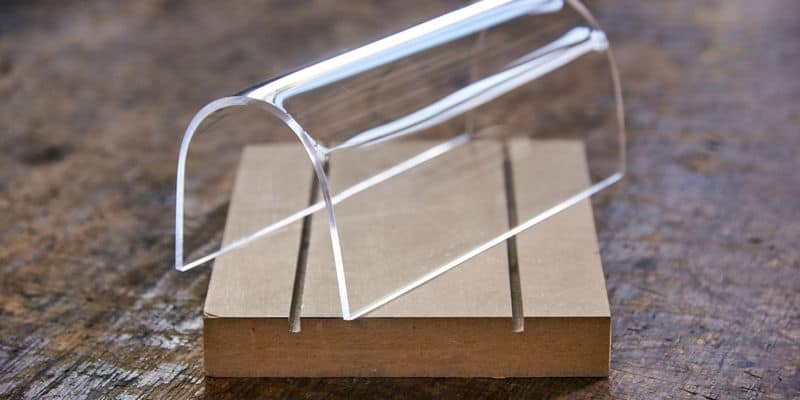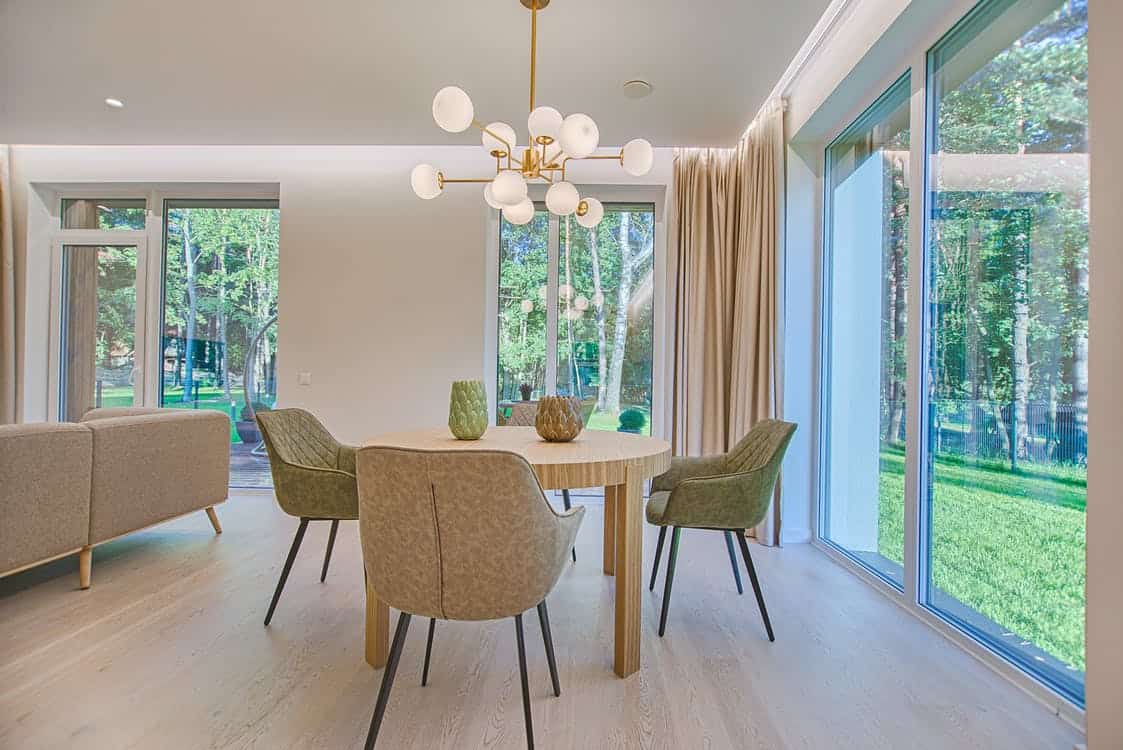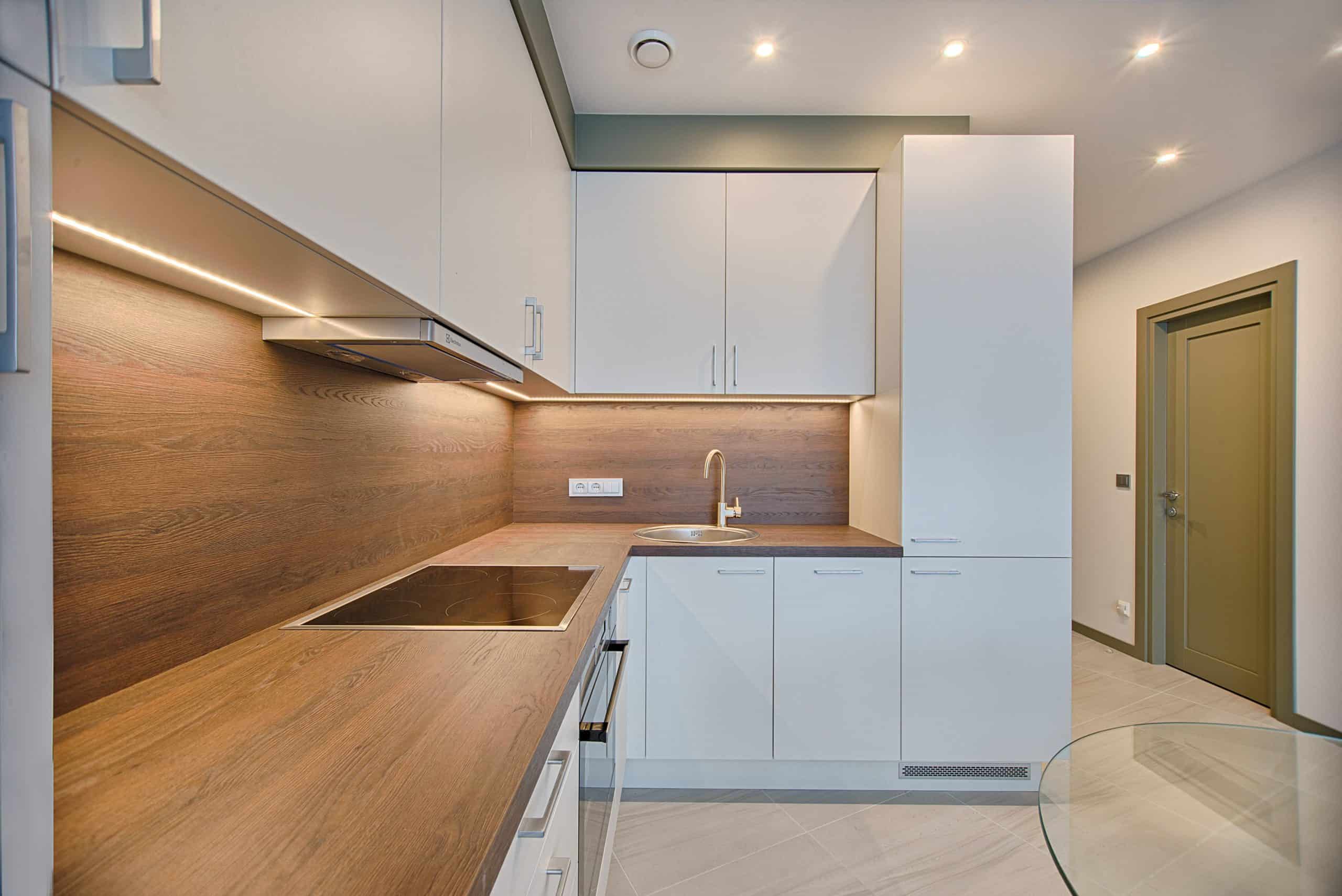Reading this means that there’s a big chance you have a hollow core door (or several) somewhere in your home that looks rather plain and boring. But since it serves pretty much the same purpose as a high-quality door, it is much cheaper to decorate a hollow-core door compared to replacing it altogether.
This can help give your home a boost of elegance without costing an arm and a leg. So, are you ready for an exciting DIY project? If you are, read on for tips and inspiration on how to dress up a hollow core door and transform your space into the epitome of elegance.
What’s a Hollow Core Door?
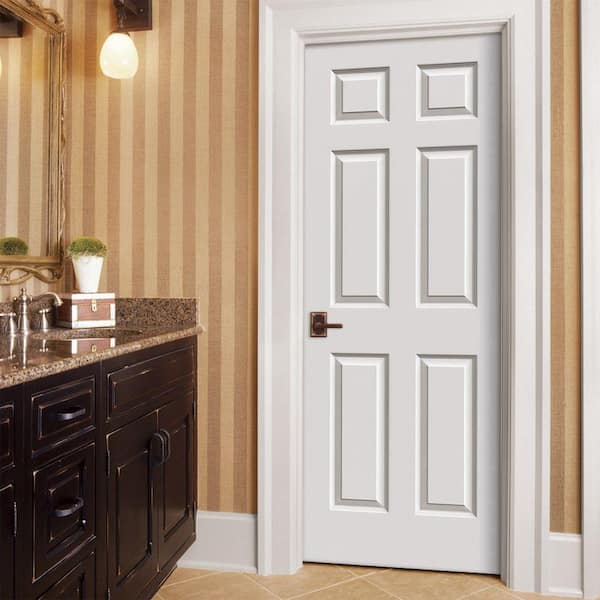
Image Source: thdstatic.com
As the name suggests, a hollow-core door is a door with a “hollow midsection,” usually made from honeycomb cardboard. Usually used as interior doors, they differ from solid core doors in that the latter usually have a fire-rated infill made from solid wood or wood veneers.
While they aren’t as structurally rigid and durable in comparison to their solid-core counterparts, some advantages of hollow-core doors include:
-
- They are relatively inexpensive.
-
- They are lightweight.
-
- They are easy to install.
Due to its lighter weight and simpler installation than solid core interior doors, this type of door is most frequently utilized in residential structures. Although hollow core interior doors aid with some acoustic insulation, they are not thought to be extremely soundproof.
Hollow core doors come with or without a frame and pre-drilled holes for hardware, and they can be painted or stained to fit the style of your house. Although this kind of door is less expensive than solid core doors, it is less durable and is more likely to dent or warp when exposed to dampness.
Dressing Versus Replacing a Hollow Core Door

Image Source: secure.img1-cg.wfcdn.com
As earlier noted, dressing up a hollow core door is often cheaper and easier than replacing it. However, you may want to replace the door if it is structurally damaged beyond repair.
Replacing the door can be a bit challenging, but it is quite doable with proper preparation. As long as you are well prepared and have some crucial tricks up your sleeve for cutting a hollow core door, replacing one shouldn’t be much of a struggle.
Ideas for Dressing up a Hollow Core Door
1. Consider Giving It a Wrap

Image Source: wrapzone.ae
One way to give your hollow core interior doors a whole new look is by wrapping them in various materials. The possibilities are endless when it comes to treatments you can use, but the most common ones include:
-
- Fabric – This is a great option if you want to use your door as more of an accent piece than something that will get a lot of use. You could even choose one fabric for the inside and another for the outside if you feel crafty!
-
- Vinyl – Vinyl sheets are easy to apply and come in all sorts of colors and patterns. They’re also waterproof, so they won’t become damaged by water stains over time like some other materials might be prone to (such as wood).
-
- Wallpaper
-
- Paint
2. Replace The Hardware
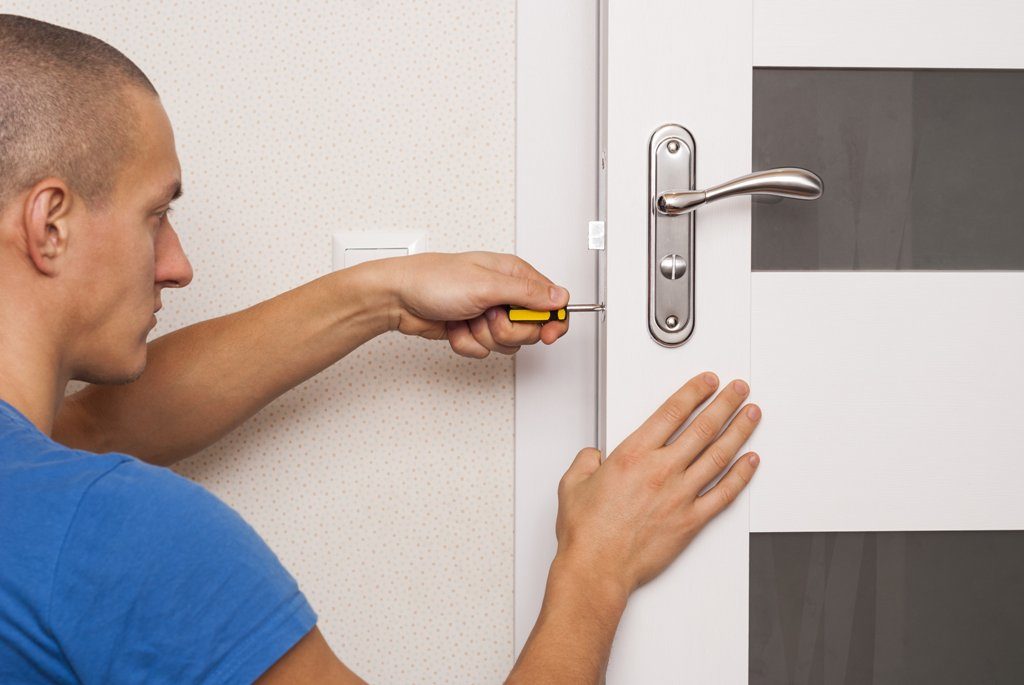
Image Source: thedoorboutique.com
Replacing hardware is also a good way to enhance your hollow core door’s appeal as well as its functionality. The doorknob, hinges, and handle are all easy to change and can instantly make your new front door look more stylish.
Replacing the knob or lock can also give an old door a new look. You can go for something simple, like a polished brass finish, or you can choose a more ornate option that gives off more of an antique vibe with its detailed scrollwork design.
3. Apply Wallpaper

Image Source: Pinterest.com
If you want to dress up your hollow core door without spending much, applying wallpaper can be an excellent option – and actually, an inexpensive way to do it. What’s more, wallpaper is available in a variety of patterns, colors, and textures, so you can choose something that best matches the decor of any room or space.
Wallpaper is also an affordable alternative to painting because it’s easy to install, remove, and replace if you decide that you don’t like how things look in the near or distant future. If you’re looking for ways to give a decent makeover to your home while staying on budget, this might be just what the doctor ordered!
4. Paint It
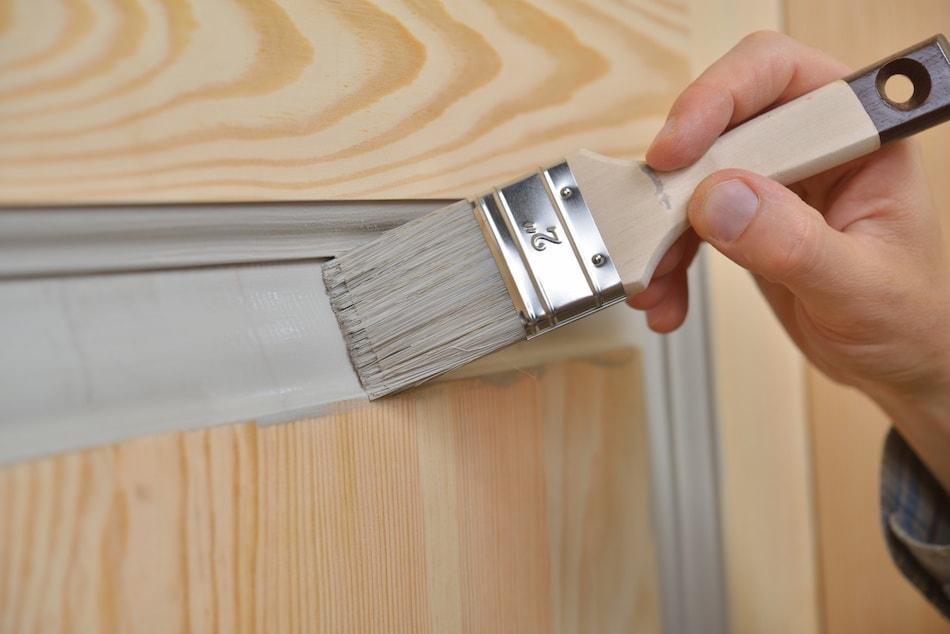
Image Source: assets.site-static.com
Painting a hollow core door is among the easiest ways to dress it up. The best part is that you don’t have to spend much money. If your door isn’t very damaged, you can paint it with any brand of latex paint that suits your style.
The trick here is to go bold—use bright colors or patterns if you want something eye-catching! You could also try using a complementary color (a shade lighter or darker than the existing color) or an accent color (a shade similar to the existing one).
5. Add Door Molding/Trim

Image Source: howtospecialist.com
Molding is a quick and easy way to enhance your hollow core door’s look. You can check online for molding or door trim ideas and pick the one that works best for you. The best part is that installing door trim isn’t a complicated task.
Once you cut the wood to the right size and shape, sand it to make it smoother, and then glue it to the desired part of the door to create a new look. You can also try adding custom molding around the top of the door to add an extra touch of elegance to your entrance.
And there, you pretty much have it! Dressing up a solid core door can be a great way to enhance your interior space décor. And thanks to the above tips, it doesn’t have to be a nerve-wracking undertaking.
Refinishing Hollow Core Interior Doors

Image Source: media.angi.com
1. Prepare Your Area by Removing Doorknobs and Hinges.

Image Source: shopify.com
To capture dust, debris, and any stray drips of wood stain, spread out a drop cloth where you’ll be working. After that, take the door’s hinges and doorknobs off using a screwdriver. Lay your door down to start the following steps, and set these aside someplace secure where they won’t be misplaced.
2. To Remove Veneer From Wood, Use Dust, Clean, and Sand.
Dust may be eliminated using a microfiber cloth, and smudges and stains can be removed with an all-purpose cleaner and a cleaning rag. Once the door has been thoroughly cleaned, start sanding any shiny, glossy veneer off until none is left.
3. Use Wood Filler to Fix Cracks and Splinters.
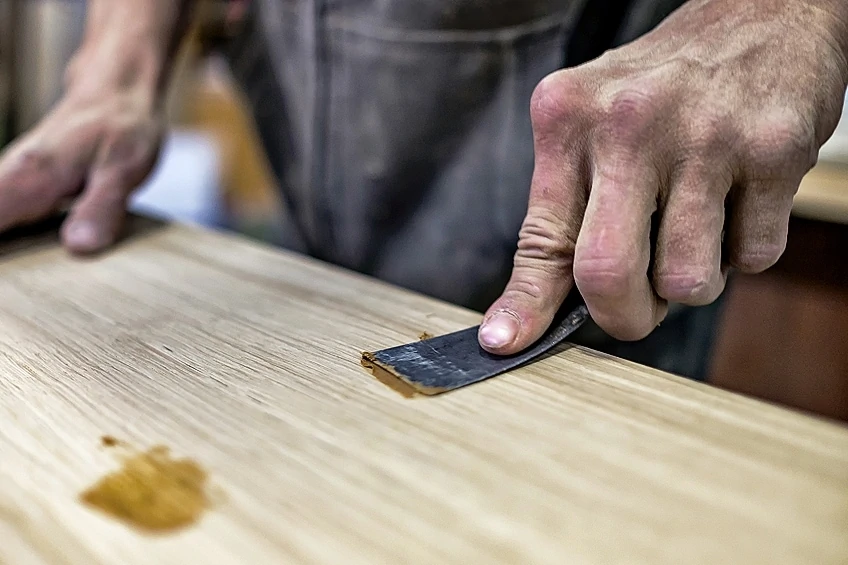
Image Source: resin-expert.com
To repair your internal door and fill any fractures in the external panel, use wood filler. Using a putty knife, remove any extra filler, allow it to dry, then re-sand the surface to make it smooth.
4. Using Wood Glue, Secure Any Lifting Corners.
If the corners of an outside wood panel start to lift, apply wood glue to each area and push hard for a few minutes to reattach. Before moving on to the next stage, allow drying.
5. Remove the Original Finish Using a Gel Stripper
While chemical strippers are too harsh for delicate hollow core doors, a gel stripper is soft and will achieve the desired result. Remember that not all hollow core interior doors are completed, to begin with, and you may be able to avoid this step entirely in certain circumstances.

Image Source: woodsmith.com
If not, start by thoroughly cleaning your door once again to get rid of all the sanding dust and dirt. Apply wood stain remover evenly with a paintbrush while donning a long-sleeve shirt, safety goggles, and chemical-proof gloves.
To ensure it has the desired effect, start with a tiny test area in a hidden location. When it has dried, remove it. If it does, go ahead and evenly coat the entire door in stain remover, let it set completely, and then totally remove it with a putty knife.
6. Repaint With Gel Stain

Image Source: bobvila.com
Apply a little gel stain using a cloth to a test area of your door. Once it has dried and you are certain it is the perfect color for you, use a foam brush or rag to apply an equal coating of gel stain over the remainder of the door.
7. Allow to Dry, and Remount
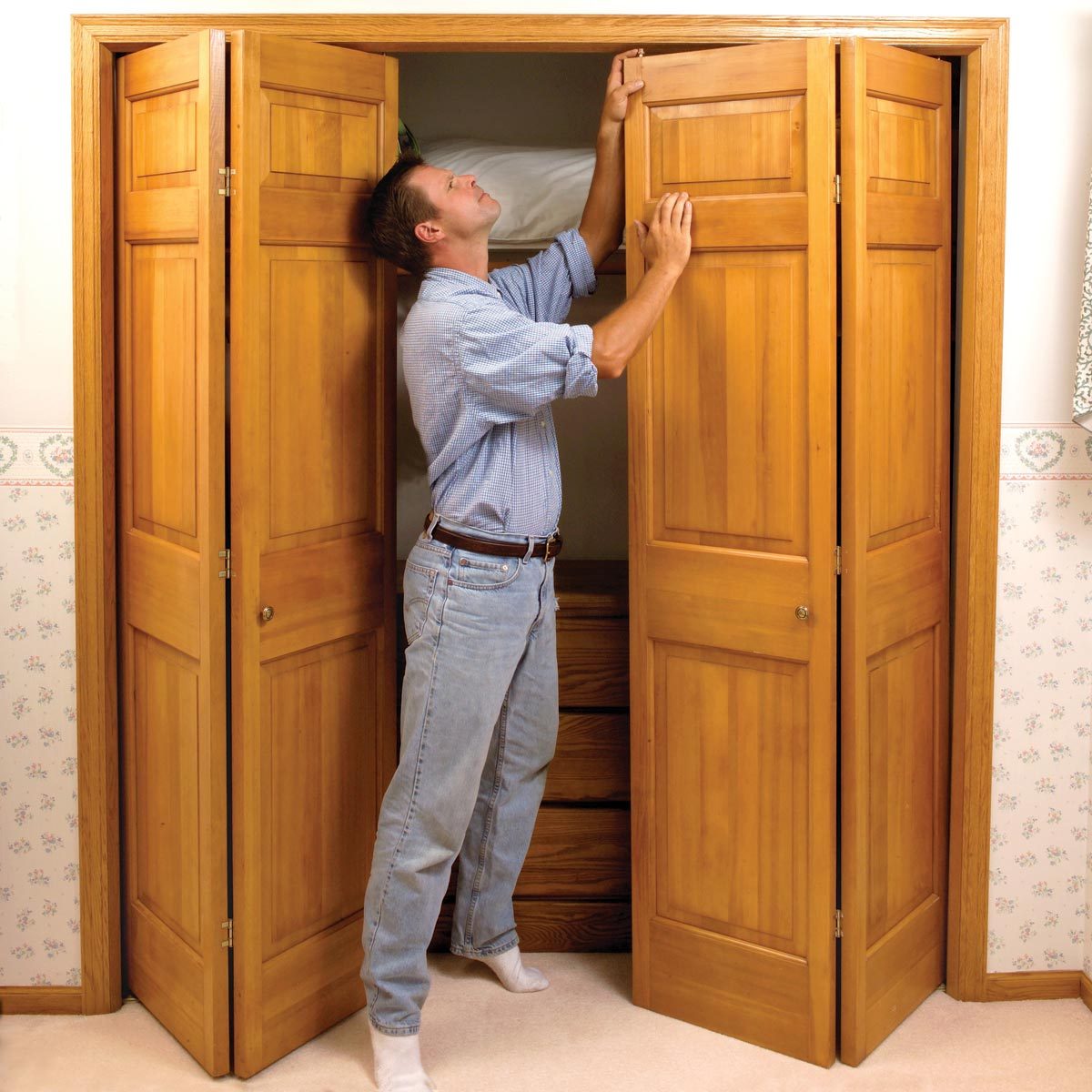
Image Source: Familyhandyman.com
If you want a polished look, use varnish once the stain has dried. If not, let it alone for a matte finish. Use a screwdriver to reattach hinges and install the door into the doorway once it has completely dried (a day or less, depending on the weather).
Frequently Asked Questions About Hollow Core Doors
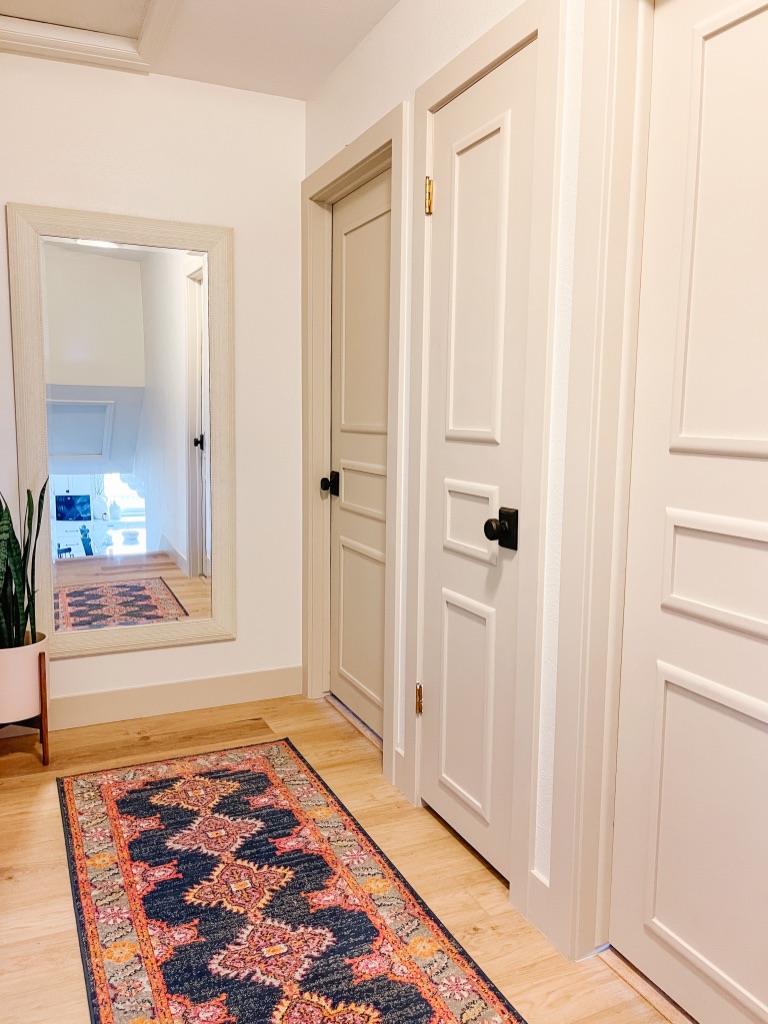
Image Source: sprucingupmamahood.com
1. Is a hollow core door better than a solid one?
Although hollow core doors are less costly, lighter, and simpler to install, solid wood doors have a greater perceived value. They are made of higher-quality, longer-lasting material and are significantly better at insulating sound and heat.
Solid-core doors are also ideal for any space that requires a higher-quality alternative. They’re perfect for places that require additional privacy and sound insulation, so consider installing solid-core doors in your bedrooms, bathrooms, and home offices.
2. How do you tell the difference between hollow and solid core doors?
The primary distinction between hollow core and solid core doors is in their construction and general function. Hollow core doors are often made of fiberboard with a thin veneer placed on the exterior for aesthetic purposes.
They are less costly than solid core doors in general, lighter, and easier to install. They are also easier to repair if they are damaged. Hollow core doors are often ideal for parts of your home such as closets, laundry rooms, pantries, and utility rooms.
Solid-core doors, on the other hand, have a stronger structural foundation. They are made of a wood frame with a fill of wood composite material such as plywood, medium-density fiberboard (MDF), or hardboard.
Because of their enhanced soundproofing and insulation, solid core doors are recommended for more visible portions of your house, such as bedrooms and other living spaces. Solid-core doors cost more, are heavier, and are more difficult to install than hollow-core doors.
3. What are hollow core doors filled with?
Hollow-core doors are made with a thin layer of wood or fiberboard put over a honeycombed cardboard or plastic core. Despite their name, hollow core doors are not fully hollow inside. They feature honeycomb cardboard inside that is encased in veneer or fiberboard. These doors are simple to install, lightweight, and affordable. They’re so light that one person can simply handle and install them.
4. Are hollow-core doors safe?
Hollow-core doors are prone to breaking due to their weak structure. It’s really easy to smash through a hollow-core door without even realizing it. This also implies that they offer little to no security within the home.
5. Can you use hollow core doors for the bedroom?
Although hollow core doors are suitable for use on interior doors such as those in bedrooms, bathrooms, the home office, or the study, they are ideal for use as a closet or pantry doors since they do not require insulation or soundproofing. But still, hollow core doors are inexpensive and simple to install, so many people use them in bedrooms and bathrooms as well.
6. How long do hollow doors last?
Hollow core doors normally last between 10 and 15 years, depending on the amount of use and the door’s quality. The longer it can survive, the higher the quality of the door and the more care that is required to maintain it.
It is critical to clean and lubricate hinges on a regular basis to keep them running smoothly and prevent them from wearing out. It is also critical to avoid exposing the door to harsh climatic changes since exposure to high temperatures, dampness, and direct sunlight can cause the door to fracture and disintegrate over time.
Also, regular inspection of the door is required to verify that there are no fractures or other sources of water damage that would limit the door’s life.

